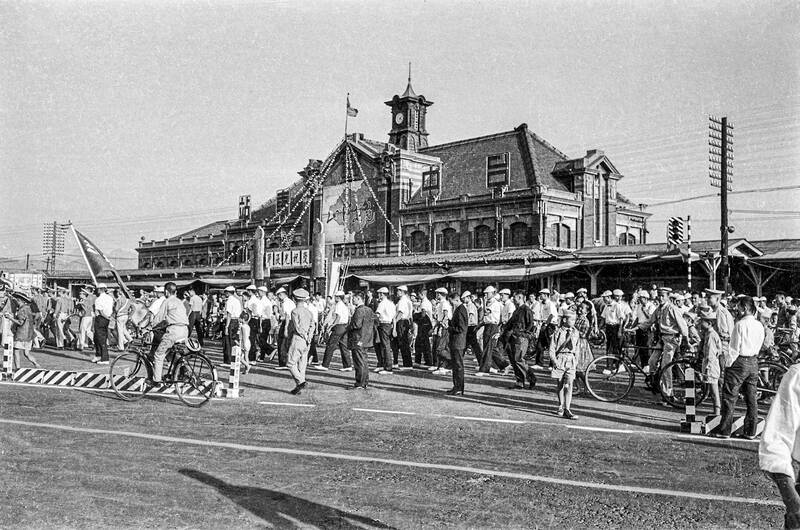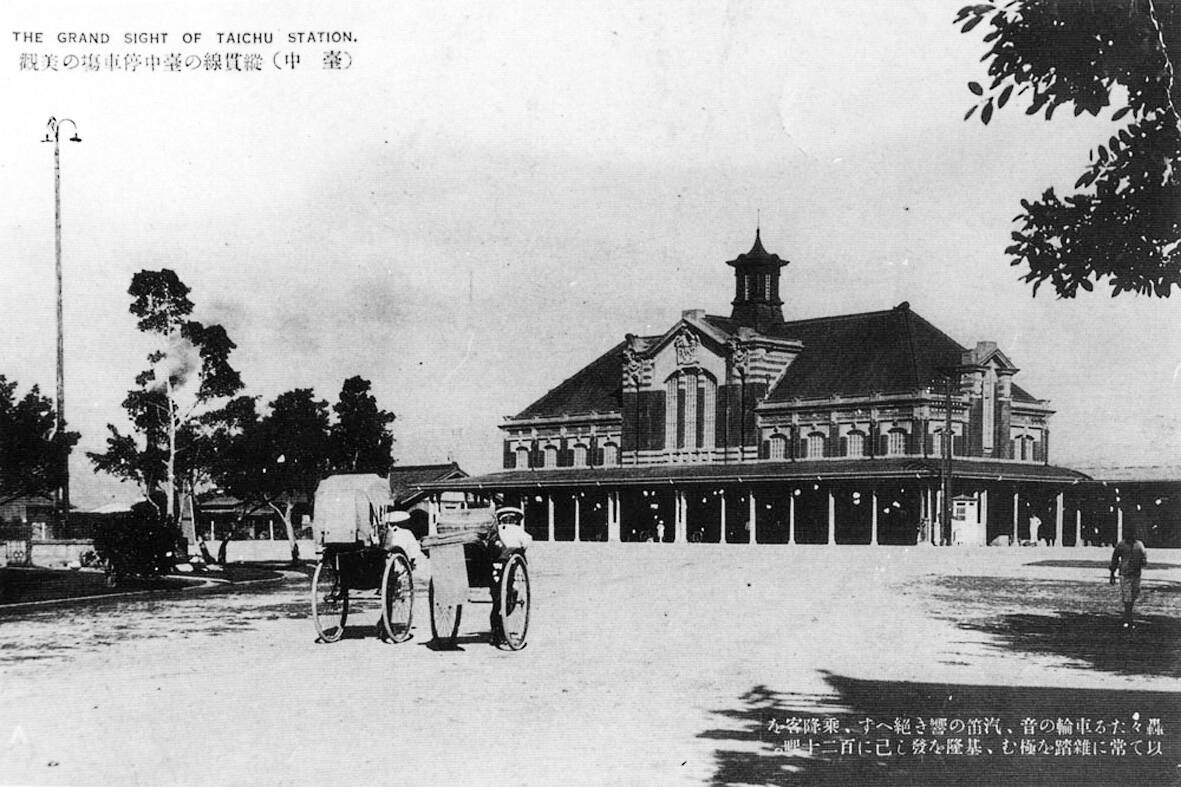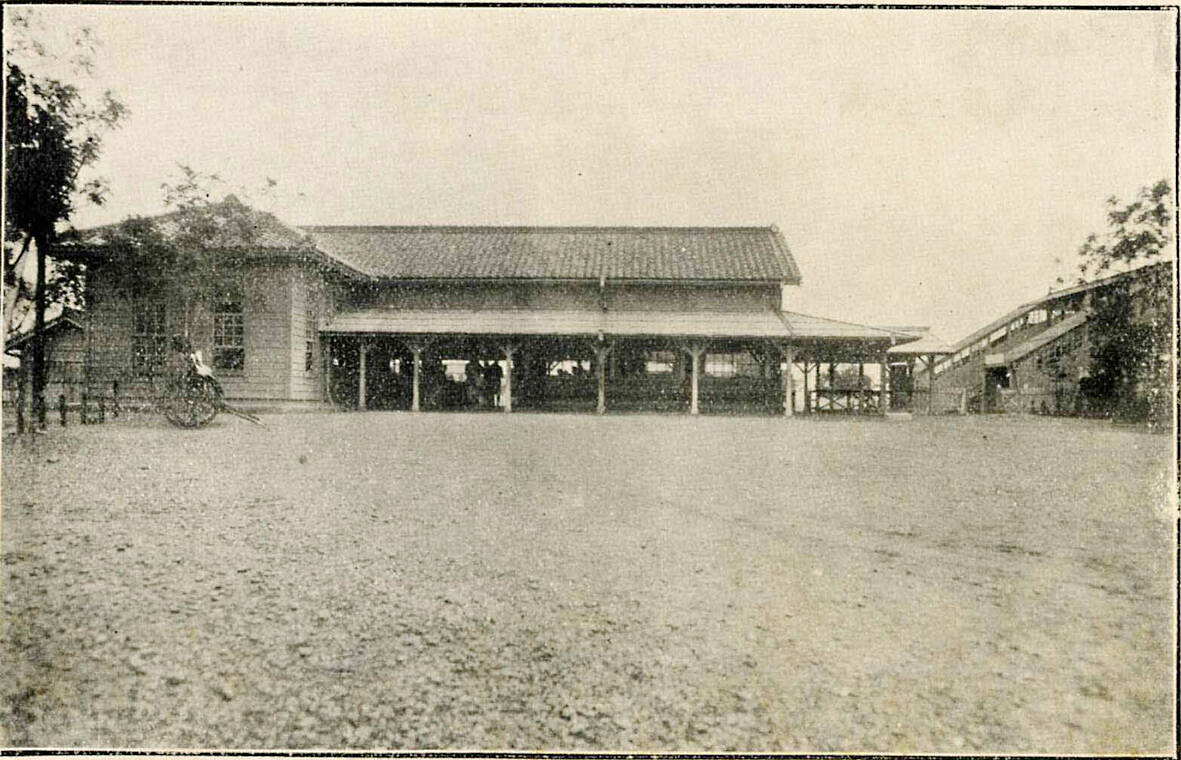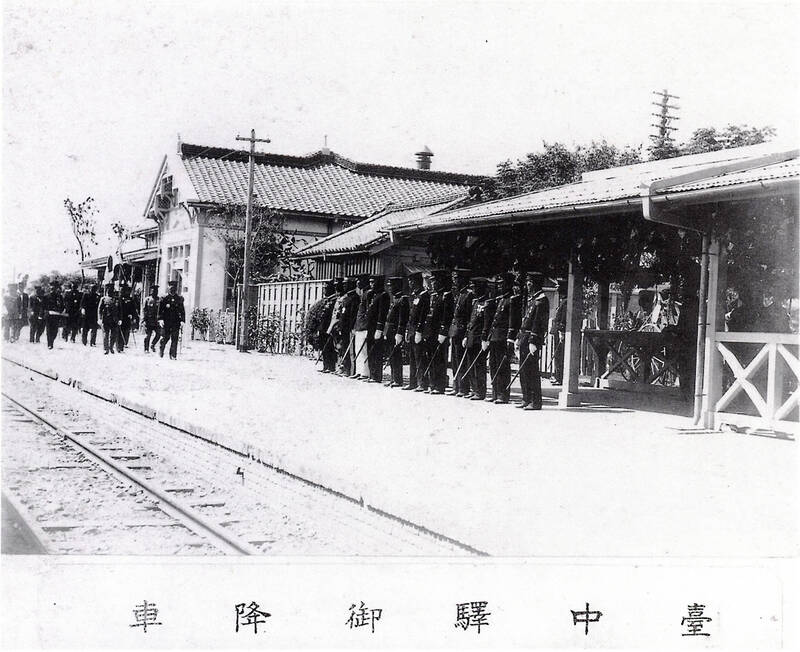May 11 to May 18
The original Taichung Railway Station was long thought to have been completely razed. Opening on May 15, 1905, the one-story wooden structure soon outgrew its purpose and was replaced in 1917 by a grandiose, Western-style station.
During construction on the third-generation station in 2017, workers discovered the service pit for the original station’s locomotive depot. A year later, a small wooden building on site was determined by historians to be the first stationmaster’s office, built around 1908.

Photo courtesy of Taiwan Culture Memory Bank
With these findings, the Taichung Railway Station Cultural Park now boasts that it has “three generations living under one roof.” The site has witnessed many historical events during 120 years as central Taiwan’s main transportation hub, and the park will be putting on special events and exhibitions until July 13 to celebrate this important anniversary. The “birthday bash” on Thursday morning will include an appearance by the historic CK124 steam locomotive built in 1936.
EXTENDING THE RAILROAD
While the Qing Dynasty initiated construction of Taiwan’s north-south railroad, it only reached Hsinchu by the time the Japanese took over in 1895. The Japanese continued the project in 1899, starting construction simultaneously from both ends. By 1904, the southern section ran from Kaohsiung to Changhua, and the northern part extended from Taipei to Miaoli County’s Sanyi Township (三義).

Photo courtesy of Taiwan Culture Memory Bank
The remaining middle section was the most difficult due to the mountainous terrain and several wide rivers. In 1905, the southern section reached Fengyuan District (豐原), just north of downtown Taichung. Six new stations were inaugurated on May 15, 1905 along this stretch; today they exist as Fengyuan (豐原), Tanzi (潭子), Wuri (烏日), Chenggong (成功) and Taichung (台中).
The first Taichung Railway Station was a single-story wooden Japanese-style structure, its appearance similar to many smaller stations that still exist today, such as Rinan (日南) and Jiji (集集). There were only southbound trains from Fengyuan at first, but Taichung Station still served 184,561 riders in 1906.
The area surrounding the train station developed quickly, as the population doubled from about 6,500 to 15,362 between 1908 and 1915, according to Chu Shu-han’s (朱書漢) “Development of Taichung Train Station and surrounding facilities” (運轉臺中:臺中火車站與周邊設施之發展).

Photo courtesy of Wikimedia Commons
On April 21, 1908, the locomotive depot with a service pit was added, as well as sky bridges crossing the tracks. The sole surviving first-generation building was also believed to have been built the same year.
MAJOR HAPPENINGS
With the completion of the challenging Tunnel No. 9 in Taichung’s Houli District (后里) in March 1908, the northern and southern sections of the railway linked up to complete the Western Trunk Line. To commemorate the occasion, tea producer Tokusaburo Miyoshi and other prominent locals organized the Train Expo, a traveling exhibition and spectacle that ran from Keelung to Kaohsiung between May 22 and June 7.

Photo courtesy of Wikimedia Commons
The expo train consisting of 15 different railroad cars visited 14 stations, setting off fireworks upon arrival while a band played. They then lit up the space with gas lamps, hung banners and opened up the carriages for visitors. Tea, beer, iced treats and products from Japan were available, and many came to take part in the raffles. The train arrived at Taichung Station in the morning of May 27 and departed the next morning.
The inauguration ceremony was held on Oct. 24, 1908 at Taichung Park, with chief engineer Hasegawa Kinsuke presiding over the events. A number of bigwigs arrived from Japan to attend, including prince Kotohito, then-minister of justice Nagamoto Okabe and Mochiaki Hachisuka, former Tokyo governor and president of the House of Peers. Also in attendance was Den Kenjiro, who would become Taiwan’s first civilian governor in 1919.
The park received many upgrades for the event, including the Mid-Lake Pavilion (湖心亭) that remains an attraction today.

Photo courtesy of Taiwan Culture Memory Bank
By 1916, ridership had increased to 559,867 and a new station was sorely needed. Construction on the second-generation building commenced that year.
SECOND GENERATION GEM
The resulting ornate red-brick structure was four times the size of the original, with warehouses and other additional facilities. It’s unclear who designed the building, but the Western-inspired architectural style is reminiscent of other structures built during that time — such as the Presidential Office, Ximen Red House and Taiwan Liquor and Tobacco Corporation.

Photo courtesy of Taiwan Culture Memory Bank
A year later, the massive “Seven Matsu” (七媽會) religious event took place. On June 6, followers from seven temples across central Taiwan met at Wuri Station and headed north toward Taichung. The 40-day ritual was held at Taichung Park, and Taichung Station also offered extra space for the worshippers. Not only did the Railways Department increase the frequency of trains between Miaoli and Changhua, the tickets were 10 percent off during the procession period.
The completion of the new station sparked another boost in traffic — jumping to 1.23 million in 1920. In 1923, Crown Prince Hirohito arrived in Taichung Station during his 12-day visit, staying a night in the city, and other royals also passed through on their way to the popular Central Taiwan Progress Association expos of 1926 and 1927.
As World War II heated, many Taiwanese joined or were conscripted into the Japanese Army, and Taichung Station was the scene of many goodbyes. The building was minimally damaged in the 1935 Hsinchu-Taichung Earthquake and the 1945 US bombings, continuing to serve well into the modern era. It was not so fortunate during the 921 Earthquake of 1999, however, suffering serious damage that took six years to repair.
In 1961, the Taisugar railroad’s (see “Taiwan in Time: The sugar train reaches its peak and goes downhill, Sept. 15, 2024) Zhongnan Line (中南線) was shut down after the devastating Aug. 7 floods of 1959 washed away a crucial bridge. Zhongnan Station became Taichung Station’s back station in 1964, allowing it to better serve its growing customers.
The government planned on razing the second-generation station and other Japanese-era buildings in the 1990s, but cultural preservationists strongly objected and it was listed as a historical relic in 1995. However, a debate continued on whether to relocate the station to another site.
In October 1995, the Ministry of the Interior announced, “The second-grade historic relic Taichung Railway Station shall not be moved!”
Taiwan in Time, a column about Taiwan’s history that is published every Sunday, spotlights important or interesting events around the nation that either have anniversaries this week or are tied to current events.

Many people noticed the flood of pro-China propaganda across a number of venues in recent weeks that looks like a coordinated assault on US Taiwan policy. It does look like an effort intended to influence the US before the meeting between US President Donald Trump and Chinese dictator Xi Jinping (習近平) over the weekend. Jennifer Kavanagh’s piece in the New York Times in September appears to be the opening strike of the current campaign. She followed up last week in the Lowy Interpreter, blaming the US for causing the PRC to escalate in the Philippines and Taiwan, saying that as

Nov. 3 to Nov. 9 In 1925, 18-year-old Huang Chin-chuan (黃金川) penned the following words: “When will the day of women’s equal rights arrive, so that my talents won’t drift away in the eastern stream?” These were the closing lines to her poem “Female Student” (女學生), which expressed her unwillingness to be confined to traditional female roles and her desire to study and explore the world. Born to a wealthy family on Nov. 5, 1907, Huang was able to study in Japan — a rare privilege for women in her time — and even made a name for herself in the

This year’s Miss Universe in Thailand has been marred by ugly drama, with allegations of an insult to a beauty queen’s intellect, a walkout by pageant contestants and a tearful tantrum by the host. More than 120 women from across the world have gathered in Thailand, vying to be crowned Miss Universe in a contest considered one of the “big four” of global beauty pageants. But the runup has been dominated by the off-stage antics of the coiffed contestants and their Thai hosts, escalating into a feminist firestorm drawing the attention of Mexico’s president. On Tuesday, Mexican delegate Fatima Bosch staged a

Would you eat lab-grown chocolate? I requested a sample from California Cultured, a Sacramento-based company. Its chocolate, not yet commercially available, is made with techniques that have previously been used to synthesize other bioactive products like certain plant-derived pharmaceuticals for commercial sale. A few days later, it arrives. The morsel, barely bigger than a coffee bean, is supposed to be the flavor equivalent of a 70 percent to 80 percent dark chocolate. I tear open its sealed packet and a chocolatey aroma escapes — so far, so good. I pop it in my mouth. Slightly waxy and distinctly bitter, it boasts those bright,